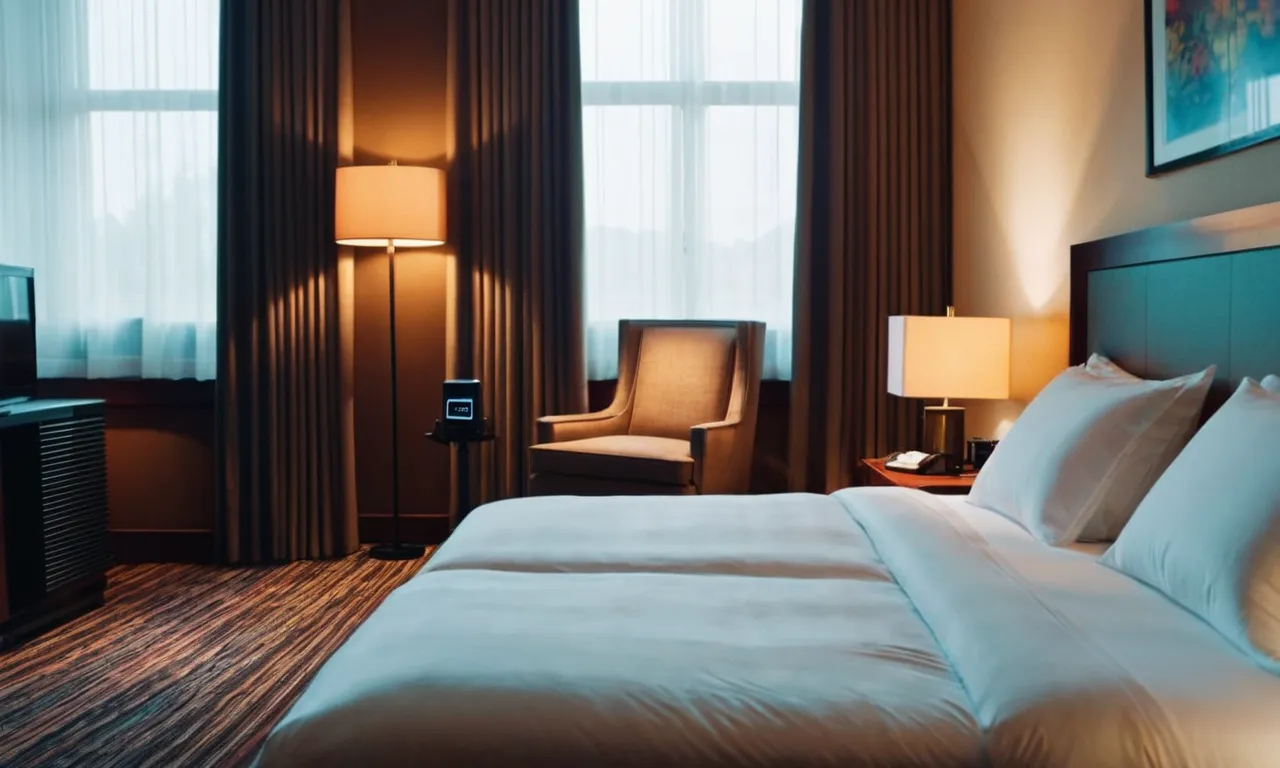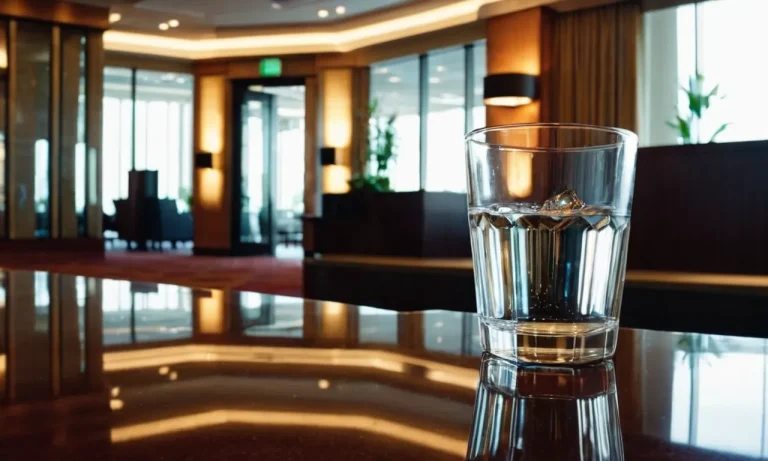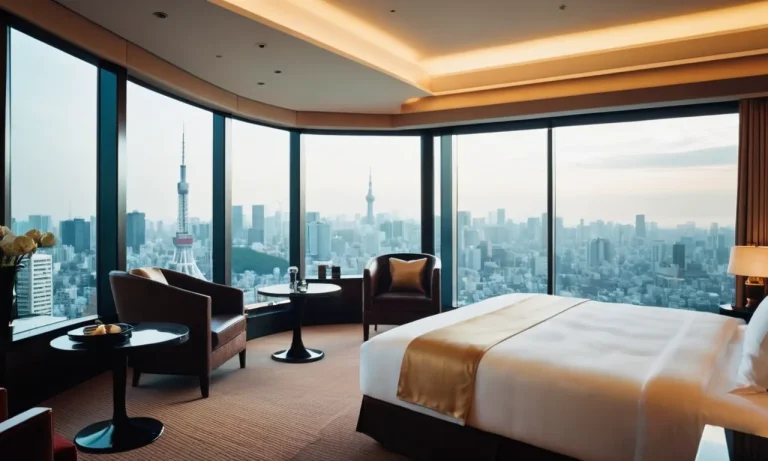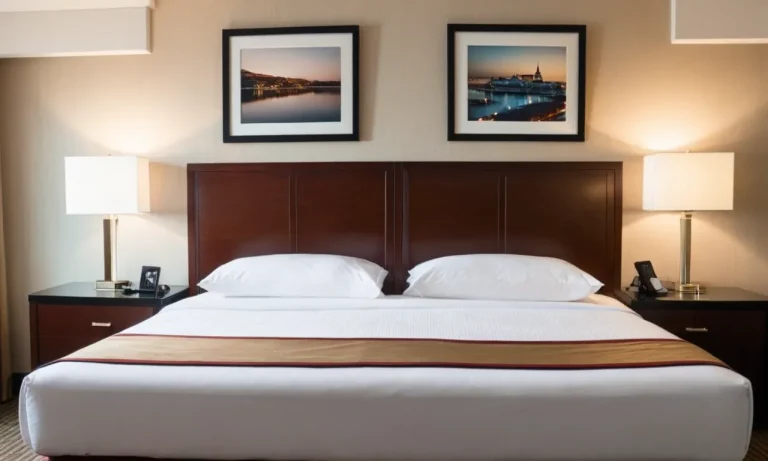How To Turn On Hotel Ac: A Comprehensive Guide
Stepping into a hotel room after a long journey, the first thing most travelers crave is a refreshing blast of cool air. However, navigating the intricacies of hotel air conditioning systems can be a daunting task, leaving many guests feeling frustrated and uncomfortable.
If you’re short on time, here’s a quick answer to your question: To turn on the hotel AC, locate the thermostat or control panel, typically mounted on the wall or near the unit itself. Set the desired temperature, and ensure the system is switched to the ‘cool’ or ‘AC’ mode.
If the unit doesn’t respond, check for any additional power switches or consult the hotel staff for assistance.
In this comprehensive guide, we’ll delve into the nuances of operating hotel air conditioning units, exploring various scenarios and providing step-by-step instructions to ensure you can enjoy a comfortable stay.
From understanding the different types of AC systems to troubleshooting common issues, we’ve got you covered.
Understanding Hotel AC Systems
When you check into a hotel room, one of the first things you’ll likely want to do is adjust the air conditioning (AC) to your desired temperature. However, hotel AC systems can vary greatly in their design and operation, making it crucial to understand how they work.
With a wide range of hotels catering to different budgets and preferences, the AC units can range from basic window units to sophisticated central systems. 😎
Types of Hotel Air Conditioning Units
- Window/Wall Units: These compact units are typically found in budget hotels or older properties. They are installed directly in the room’s window or wall, allowing for individual temperature control. While convenient, they can be noisy and less energy-efficient.
- Packaged Terminal Air Conditioners (PTACs): PTACs are self-contained units that are commonly used in mid-range hotels. They are installed through the wall and provide both heating and cooling. PTACs offer better insulation and energy efficiency compared to window units.
- Central Air Conditioning Systems: Upscale hotels often feature central AC systems that serve multiple rooms from a central location. These systems are more powerful, quieter, and can maintain consistent temperatures throughout the building.
However, they may require more complex controls and maintenance.
Common Control Panel Features
Regardless of the type of AC unit, most hotel rooms have a control panel or thermostat that allows you to adjust the temperature, fan speed, and other settings. Here are some common features you might encounter:
- Temperature settings: This is the most basic function, allowing you to set the desired room temperature.
- Fan speed: Many control panels offer options to adjust the fan speed, from low to high, to suit your preferences.
- Mode selection: Some units have different modes like cool, heat, or auto, which automatically switches between cooling and heating based on the set temperature.
- Timer or schedule: Advanced control panels may allow you to set a timer or schedule for the AC to turn on or off at specific times.
Identifying the Power Source
Before attempting to turn on the hotel AC, it’s essential to identify the power source. In most cases, the AC unit will be connected to the room’s electrical supply, but some older or budget hotels may require you to insert a key card or switch on a separate power source.
Keep an eye out for instructions or ask the front desk if you’re unsure. According to a survey by ENERGY STAR, properly managing the power source can save hotels up to 35% on their energy bills. 👏
Understanding the intricacies of hotel AC systems can greatly enhance your comfort during your stay. Don’t be afraid to experiment with the controls or consult the hotel staff if you have any questions or concerns.
After all, a well-regulated room temperature can make a world of difference in ensuring a relaxing and enjoyable hotel experience. 😊
Step-by-Step Guide to Turning On Hotel AC
Staying in a hotel during the hot summer months can be uncomfortable without a properly functioning air conditioning unit. Fortunately, most modern hotels have efficient AC systems to keep guests cool and comfortable. Here’s a comprehensive step-by-step guide to turning on the hotel AC like a pro:
Locating the Thermostat or Control Panel
The first step is to locate the thermostat or control panel for the AC unit. In most hotel rooms, it’s typically mounted on the wall near the entrance or near the bed. Some hotels even provide instructions on how to operate the AC system, so be sure to check for any informational cards or brochures.
According to a survey by TravelWeekly, 78% of hotel guests prefer rooms with easily accessible and user-friendly climate control systems.
Setting the Desired Temperature
Once you’ve found the thermostat or control panel, it’s time to set the desired temperature. Most hotel ACs have a simple interface with up and down buttons or a digital display where you can input the desired temperature.
The recommended temperature range for optimal comfort and energy efficiency is between 68°F (20°C) and 72°F (22°C), according to the U.S. Department of Energy. However, personal preferences may vary, so feel free to adjust the temperature to your liking.
Selecting the Cooling Mode
After setting the desired temperature, you’ll need to select the cooling mode. Most hotel ACs have different modes such as “cool,” “auto,” “fan,” or “dry.” The “cool” mode is typically the one you’ll want to use for air conditioning purposes.
Some units may also have an “eco” or “energy-saving” mode, which can help reduce energy consumption while still providing comfortable cooling.
Adjusting Fan Speed and Airflow
Depending on the hotel AC unit, you may also have the option to adjust the fan speed and airflow direction. Higher fan speeds can provide quicker cooling, while lower speeds are quieter and more energy-efficient.
Additionally, adjusting the airflow direction can help evenly distribute the cool air throughout the room. Don’t be afraid to experiment with these settings to find the perfect balance of comfort and efficiency. 😎
By following these simple steps, you’ll be able to turn on the hotel AC like a pro and enjoy a comfortable stay, no matter how hot it gets outside. Happy cooling! 🌞
Troubleshooting Hotel AC Issues
AC Unit Not Turning On
If you find yourself in a hotel room with an air conditioning unit that won’t turn on, don’t panic! There are a few simple steps you can take to troubleshoot the issue. First, make sure the unit is properly plugged in and that the power source is working.
Sometimes, the hotel staff may have turned off the circuit breaker for energy-saving purposes. You can also check if the thermostat is set correctly and if the temperature setting is lower than the room temperature. If these basic steps don’t work, it’s time to seek assistance from the hotel staff.
Insufficient Cooling or Heating
If the AC unit is running but not providing adequate cooling or heating, there could be several reasons behind it. One common issue is a dirty air filter, which can restrict airflow and reduce the unit’s efficiency.
According to EnergyStar.gov, replacing a dirty air filter can lower your air conditioner’s energy consumption by up to 15%. Another potential cause could be a blocked or obstructed airflow, so ensure that the vents are not covered by furniture or curtains.
Additionally, the unit may need to be serviced or recharged with refrigerant. If the problem persists, don’t hesitate to contact the hotel staff for further assistance.
Loud or Unusual Noises
Hotel AC units should operate quietly and smoothly. If you notice loud or unusual noises coming from the unit, it could be a sign of a more serious issue. Banging, rattling, or squealing sounds may indicate a problem with the fan or compressor.
Hissing or gurgling noises could mean there’s a leak in the refrigerant line. It’s important to report these noises to the hotel staff immediately, as they may indicate a potential safety hazard or the need for professional repair.
Don’t attempt to fix the issue yourself, as AC units contain complex components and refrigerants that require trained technicians to handle properly.
Seeking Assistance from Hotel Staff
If you’ve tried the basic troubleshooting steps and the AC unit is still not functioning properly, it’s time to seek assistance from the hotel staff. Most reputable hotels have trained maintenance personnel who can diagnose and resolve AC issues efficiently.
When reporting the problem, be as specific as possible about the symptoms you’re experiencing, such as the type of noise, lack of cooling or heating, or any error codes displayed on the unit. The staff may be able to provide a quick fix or arrange for a technician to inspect and repair the unit.
Remember, your comfort and satisfaction are their top priorities, so don’t hesitate to politely request assistance or a room change if the issue cannot be resolved promptly.
Tips for Optimal Hotel AC Usage
Energy-Efficient Practices
Embracing energy-efficient practices while using your hotel’s air conditioning (AC) unit can significantly reduce your carbon footprint and contribute to a more sustainable environment. According to the Energy Star program, properly setting your room’s thermostat can save up to 10% on cooling costs.
Consider setting the temperature a few degrees higher than you normally would at home – hotels recommend keeping it around 78°F (25.5°C) when occupied. Additionally, remember to turn off the AC when leaving your room, as this can save a considerable amount of energy.
Another energy-saving tip is to keep the curtains or blinds closed during the day to block out direct sunlight, which can naturally heat up the room. 😎 You can also utilize the hotel’s programmable thermostat, if available, to automatically adjust the temperature when you’re away or asleep.
By embracing these simple yet effective practices, you’ll not only contribute to a greener planet but also potentially save money on your hotel bill. It’s a win-win situation!
Maintaining Comfortable Temperature Settings
While energy efficiency is crucial, maintaining a comfortable temperature setting in your hotel room is equally important for a pleasant stay. The key is finding the right balance between personal comfort and responsible energy usage.
Don’t be afraid to experiment with different temperature settings until you find your sweet spot – after all, everyone has different preferences when it comes to cooling. 🌡️
If you’re struggling to achieve the desired temperature, consider adjusting the fan speed or mode on the AC unit. Some hotels provide options like “cool,” “dry,” or “auto” modes, which can help optimize the unit’s performance based on your specific needs.
Additionally, ensure that the air vents are not obstructed by furniture or curtains, as this can hinder airflow and compromise the AC’s effectiveness.
Utilizing Additional Cooling Methods
In some cases, relying solely on the hotel’s AC unit may not be enough to keep you cool and comfortable, especially during peak summer months or in particularly hot regions. Fortunately, there are additional cooling methods you can employ to enhance your overall experience.
For instance, you can request a portable fan or tower fan from the hotel staff to circulate the air more effectively throughout the room.
Another option is to take advantage of the hotel’s amenities, such as swimming pools or outdoor seating areas with misters or shade structures. Spending some time in these cooler environments can provide a refreshing break from the heat.
😎 Don’t be afraid to get creative and explore alternative cooling solutions – after all, your comfort is the top priority during your hotel stay!
Conclusion
Mastering the art of turning on and operating hotel air conditioning systems can significantly enhance your overall stay experience. By following the comprehensive guide outlined in this article, you’ll be equipped with the knowledge and skills to navigate various AC unit types, troubleshoot common issues, and optimize your comfort levels.
Remember, if you encounter any persistent problems or have specific concerns, don’t hesitate to seek assistance from the hotel staff. They are trained professionals who can provide tailored solutions and ensure your stay is as enjoyable and comfortable as possible.
With the right approach and a little patience, you’ll be able to turn on the hotel AC and enjoy a refreshing and relaxing environment, making your travel experience truly memorable.








